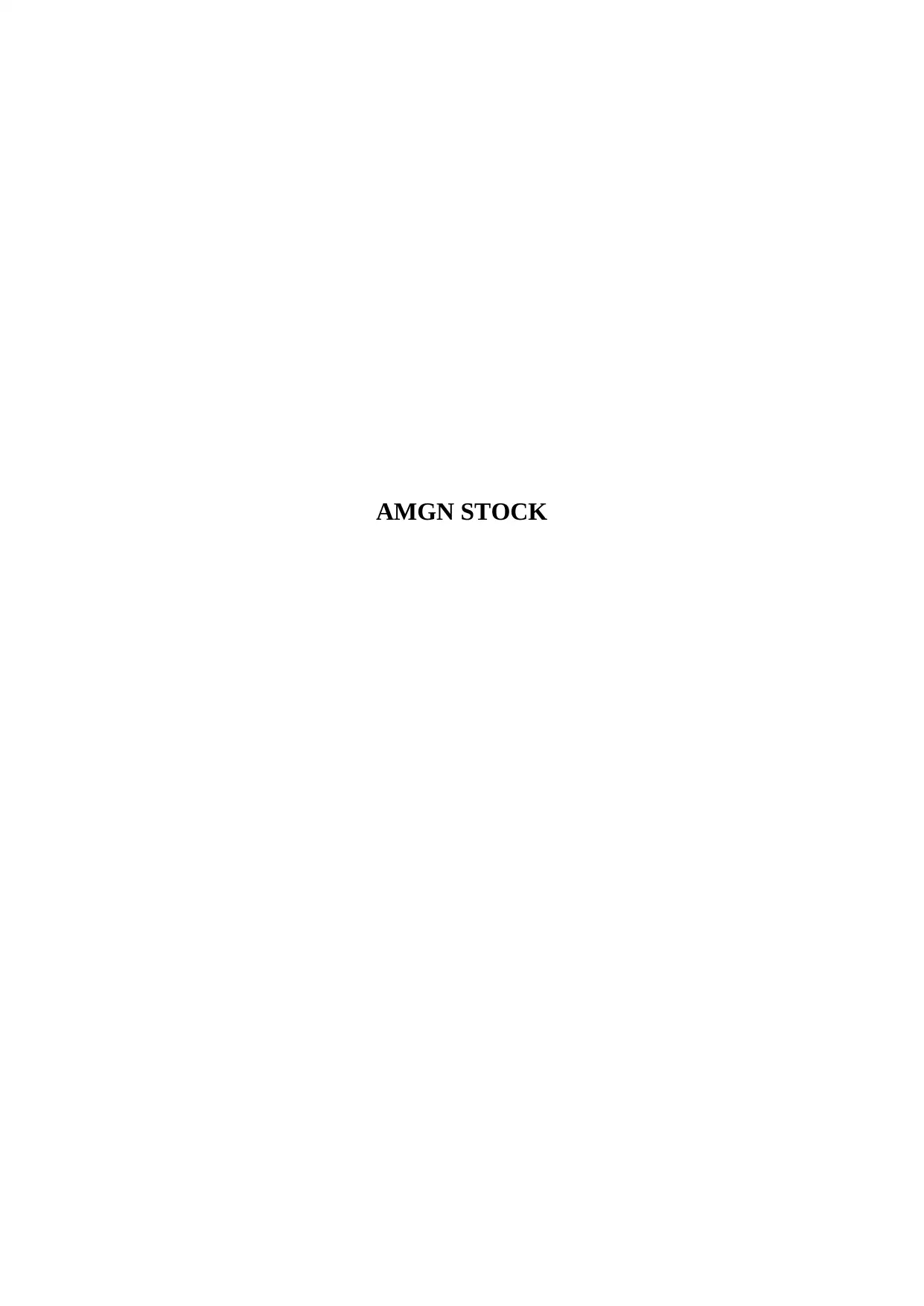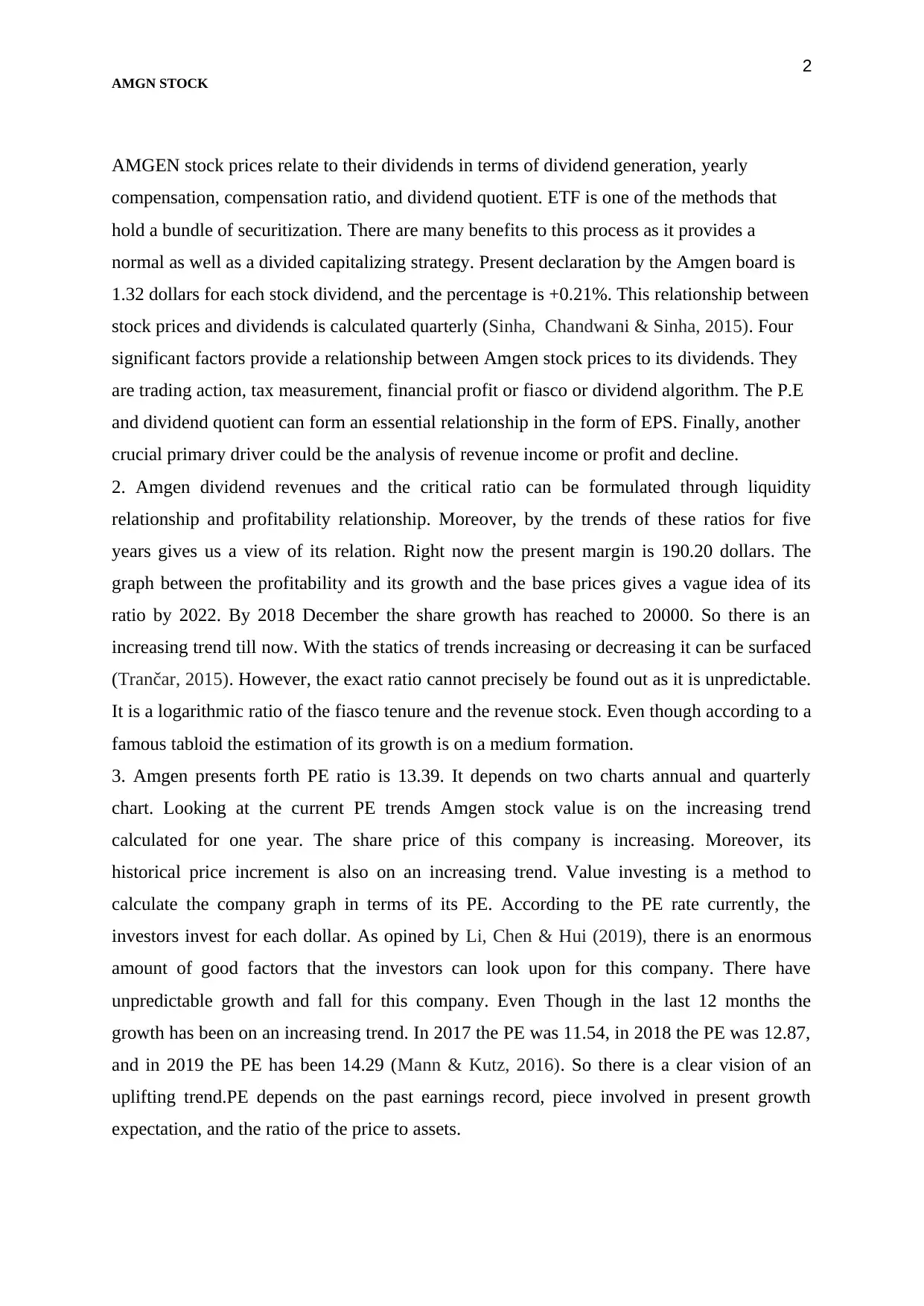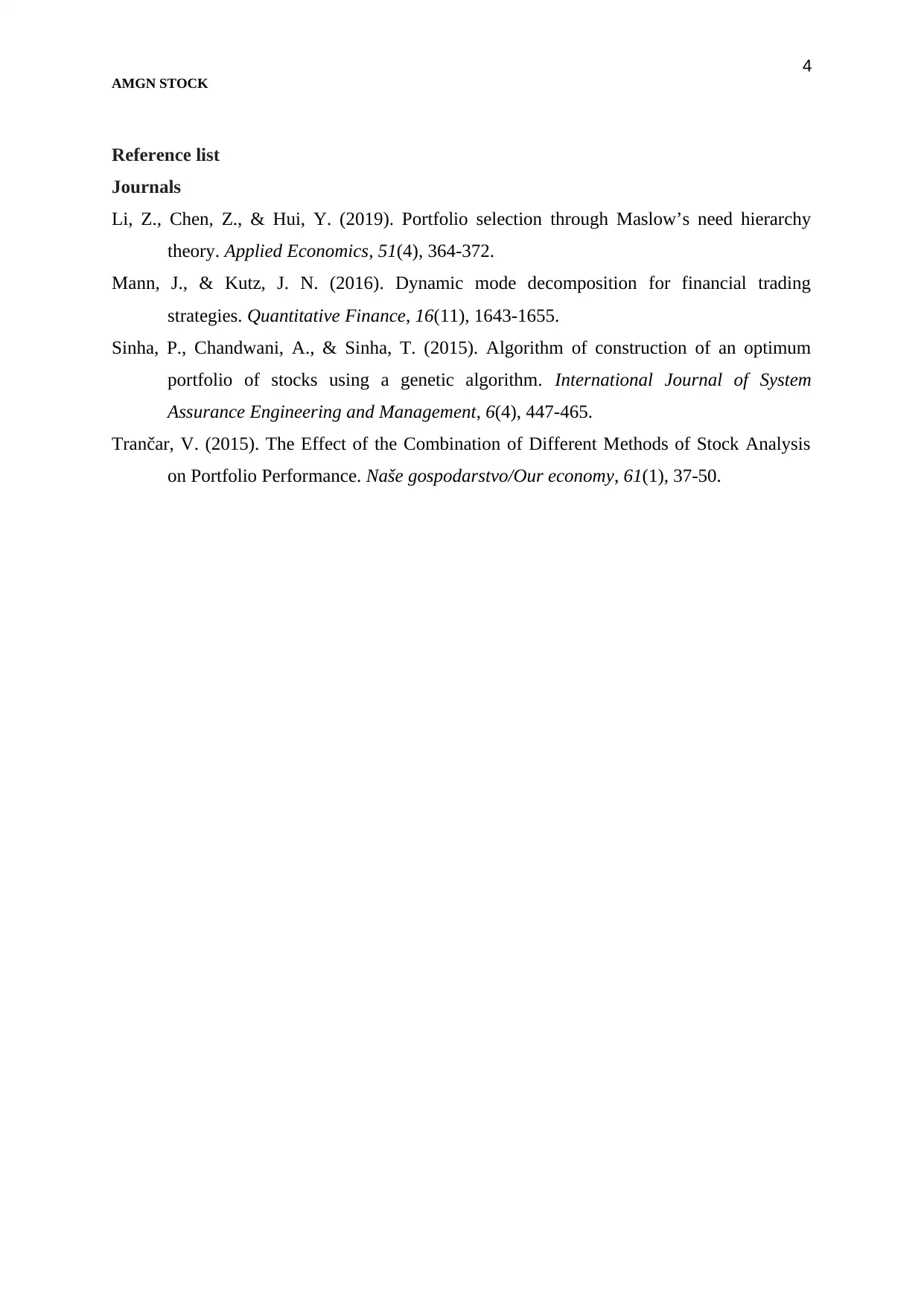Comprehensive Report on Amgen Stock: Dividends, PE, and Revenue
VerifiedAdded on 2023/04/20
|4
|723
|198
Report
AI Summary
This report analyzes the relationship between Amgen's stock prices and its dividends, focusing on factors such as dividend generation, yearly compensation, and the dividend quotient. It explores how trading action, tax measurements, financial performance, and dividend algorithms influence this relationship. The analysis extends to Amgen's dividend revenues and critical ratios, examining liquidity and profitability relationships over a five-year period to understand trends. The report also delves into Amgen's PE ratio, assessing its historical and current trends to gauge investment value, noting the increasing trend in PE from 2017 to 2019 and its implications for investors. The PE computation is based on the price-to-income ratio, highlighting Amgen's consistent growth according to market research.
1 out of 4











![[object Object]](/_next/static/media/star-bottom.7253800d.svg)